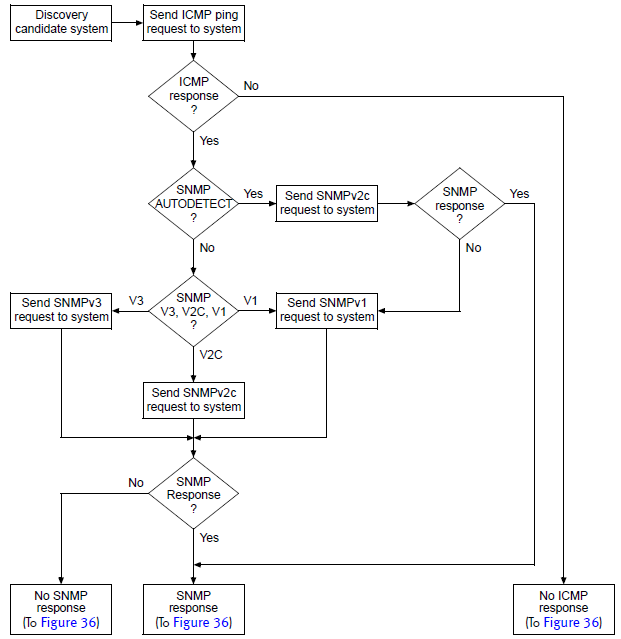Discovery for each discovery candidate system begins with a hostname or an IP address, which is provided by the user or automatically discovered. The discovery process resolves the hostname to one or more IP addresses through the local name resolution service. An IP address may be IPv4 or IPv6.
During the first phase of the discovery process, shown in Phase 1: Initial polling of a candidate system, the discovery process sends an ICMP request to determine if the discovery candidate system is reachable, and then sends an SNMP request to identify the system.

The discovery process pings the IP address of the discovery candidate system to see if the address is a reachable address. If the address is reachable, the discovery process sends an SNMP request to the system to request the following system-related information:
-
sysName
-
sysDescr
-
sysObjectID
-
sysContact
-
sysLocation
By default, the discovery process sends an SNMPv2c request to the candidate system. If that request fails after the allotted number of retries, the discovery process sends an SNMPv1 request. If the SNMP version is explicitly specified (V1, V2C, V3) for the candidate system (through a discovery filter, a seed file, or an Add Agent command), the discovery process only sends an SNMP request by using the specified version.
Note:Discovery filters support SNMP version V1 and V2C, but not V3.
For an SNMPv1 or v2c request to a candidate system that has multiple read community strings, the discovery process sends multiple SNMP requests to the system simultaneously, where each request contains a different community string. You can specify multiple read community strings for a candidate system.
The results of the ICMP and SNMP polling serve as input to the second phase of the discovery process.